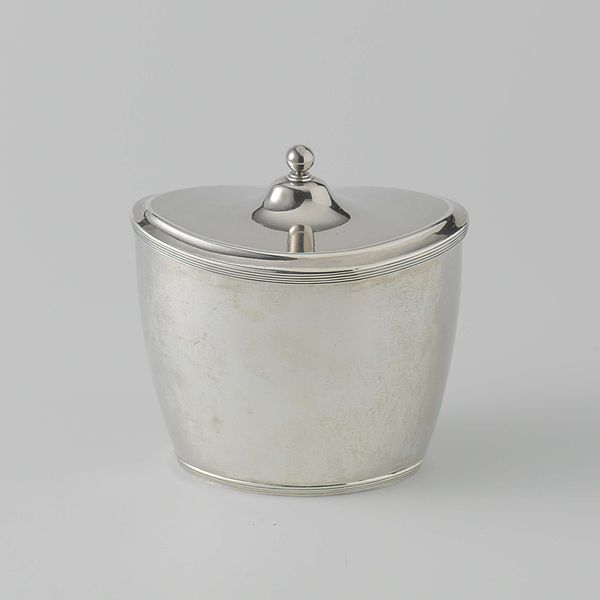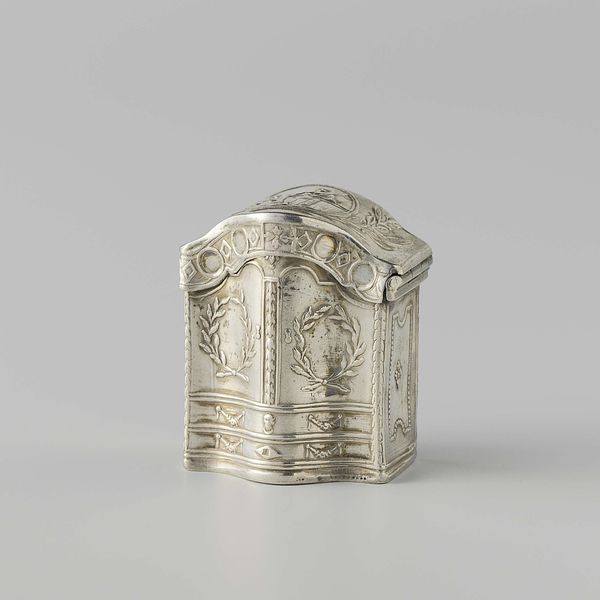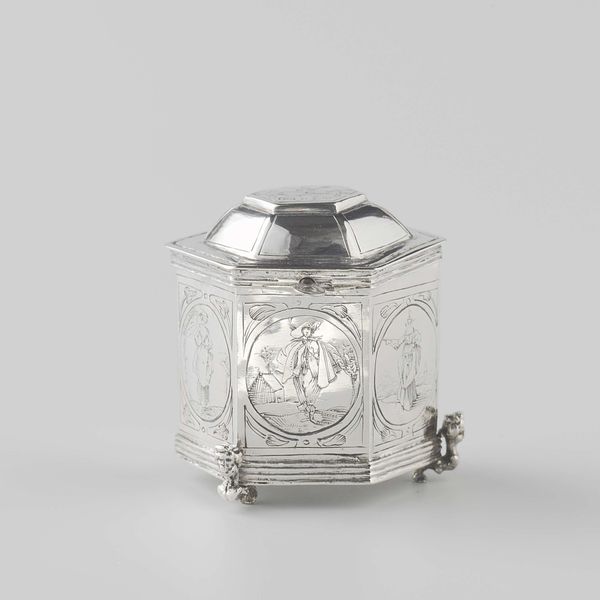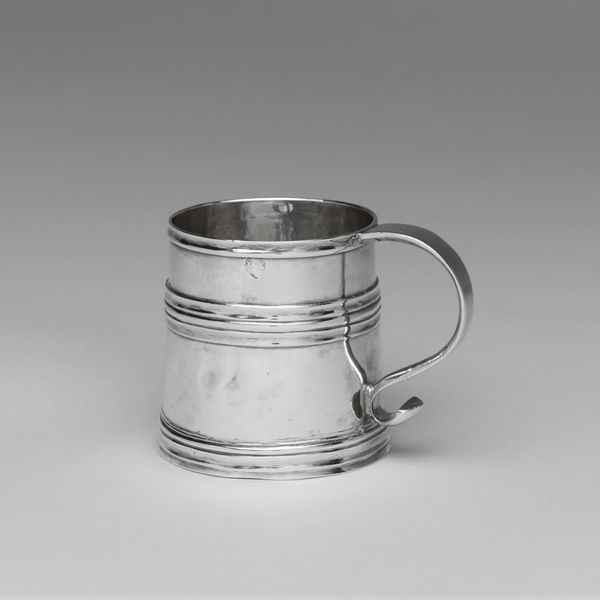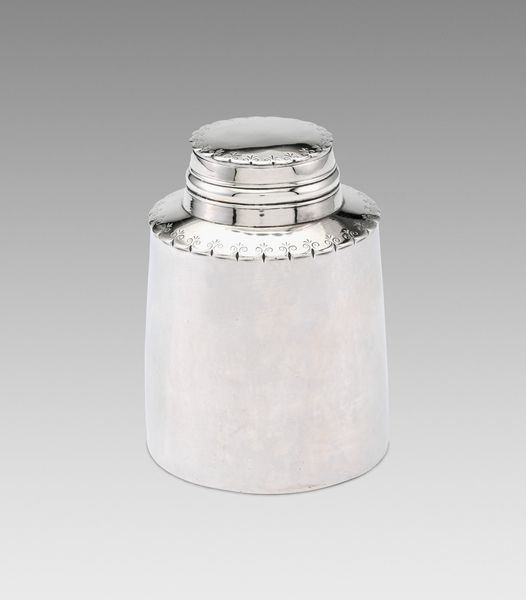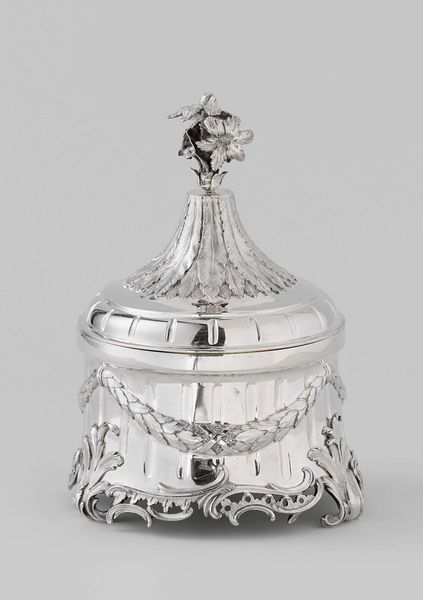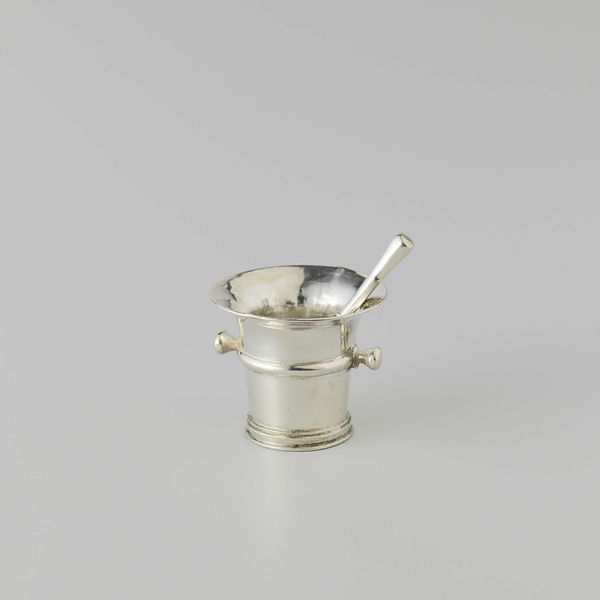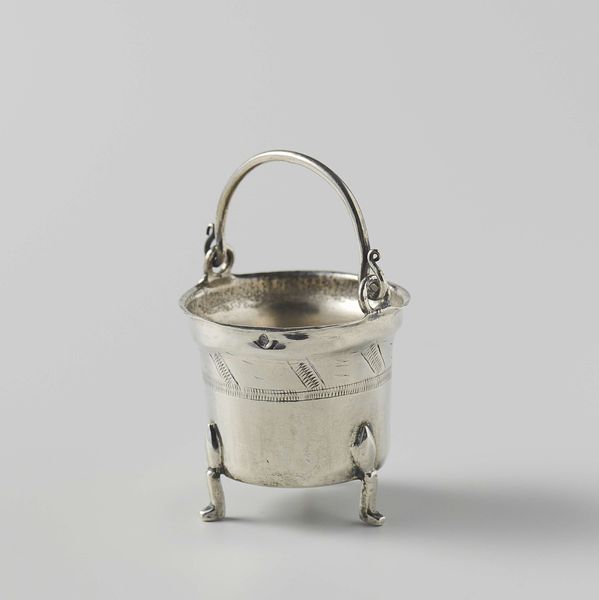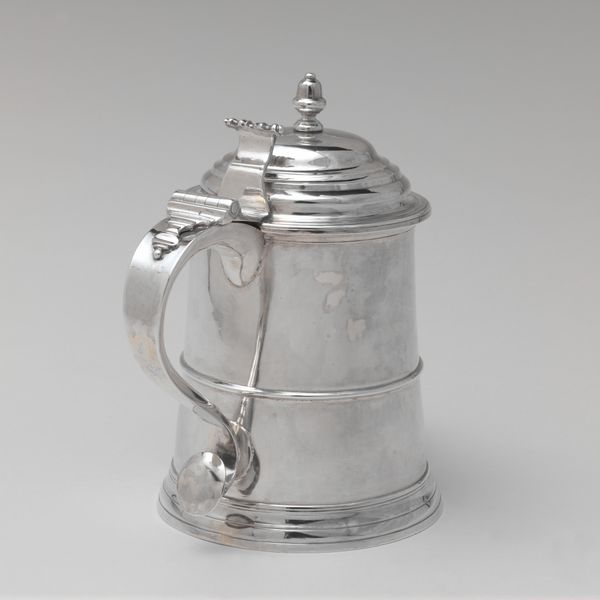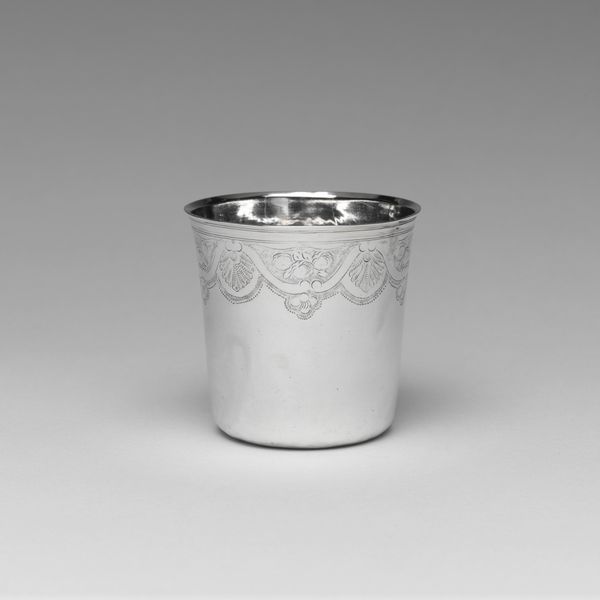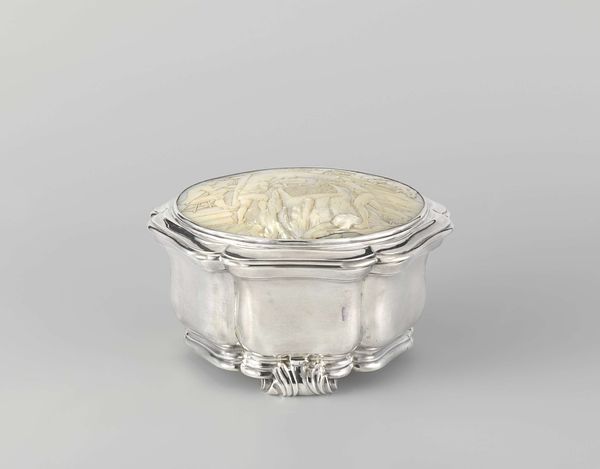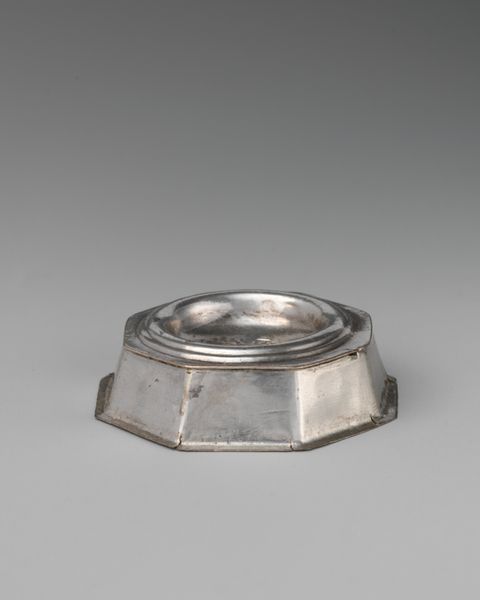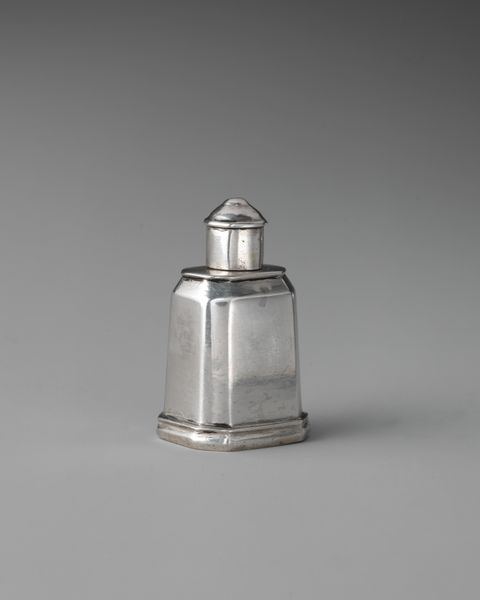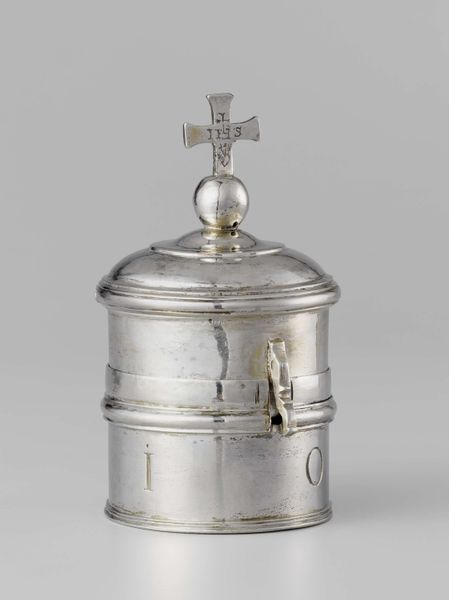
silver, metal
#
silver
#
baroque
#
metal
Dimensions: height 4.3 cm, width 3.8 cm, depth 3.6 cm
Copyright: Rijks Museum: Open Domain
Curator: The object before us, dating from around 1720, is known as a "Suiker- of koffiebus," which translates to a sugar or coffee container. Crafted in the baroque style by Abraham van der Hoeff, it is formed from silver. Editor: My immediate impression is of something deceptively simple. It’s just a small, cylindrical container, yet it feels very self-contained and precious somehow. There's a sort of austere elegance in its design. Curator: Indeed. Though modest in scale, the "bus" is brimming with cultural significance. In the early 18th century, sugar and coffee were highly sought-after commodities, often associated with status and trade. Storing them in a locked container, made of such a precious material, highlights that significance. Editor: Absolutely. The lock and key, even on something so small, become symbols of control over global trade routes and colonial power structures. These items represent access, privilege, and wealth consolidated in the hands of a few. Is there any particular symbolism to note here? Curator: Look closely at the hasp. Notice the crafted detailing, small elements evoking craftsmanship but not quite representational of any overt figures. Given van der Hoeff’s era, such detailing points to cultural understanding beyond craft. Editor: It’s striking how much meaning can be loaded onto an everyday object. This isn’t just a container; it’s a miniature archive of social values, material culture, and the nascent global economy. I keep thinking about what it represents: a global story told through a tiny silver vessel. Curator: Precisely. What feels like something simple and baroque at first glance really opens up questions about power and the beginning of mass globalization, wouldn’t you agree? Editor: Definitely. And I see how examining everyday objects can make a distant history very immediate. Curator: Exactly. It’s like holding a fragment of history in your hand.
Comments
No comments
Be the first to comment and join the conversation on the ultimate creative platform.
